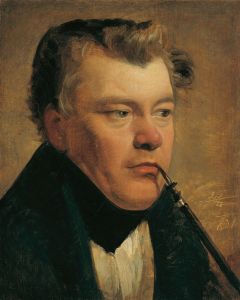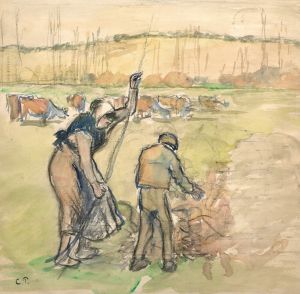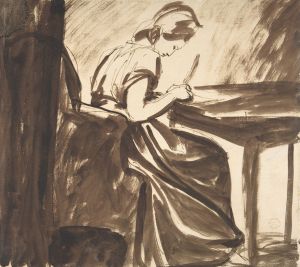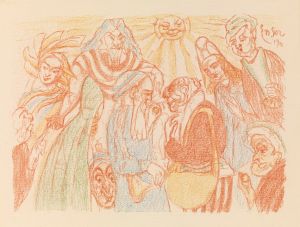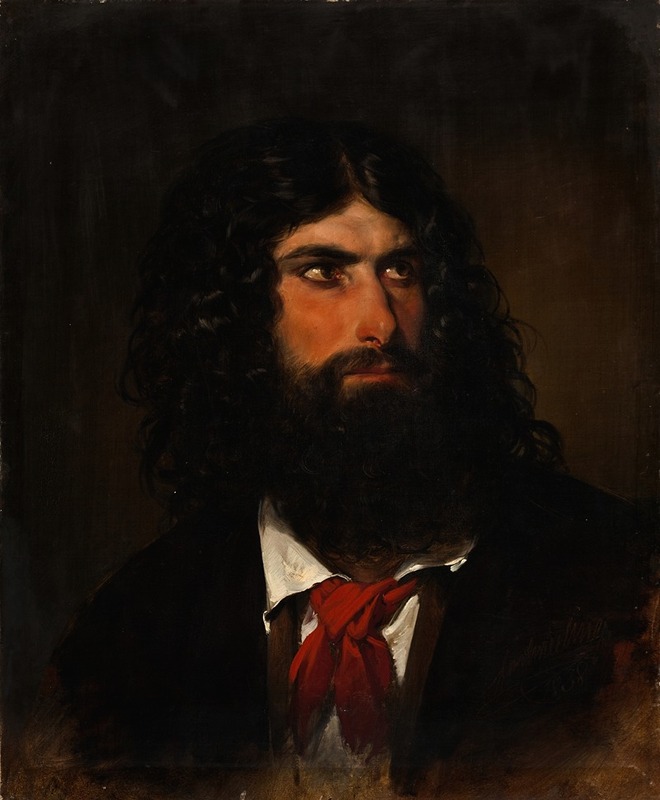
Portrait Of A Roman Peasant
A hand-painted replica of Friedrich von Amerling’s masterpiece Portrait Of A Roman Peasant, meticulously crafted by professional artists to capture the true essence of the original. Each piece is created with museum-quality canvas and rare mineral pigments, carefully painted by experienced artists with delicate brushstrokes and rich, layered colors to perfectly recreate the texture of the original artwork. Unlike machine-printed reproductions, this hand-painted version brings the painting to life, infused with the artist’s emotions and skill in every stroke. Whether for personal collection or home decoration, it instantly elevates the artistic atmosphere of any space.
Friedrich von Amerling was a prominent Austrian portrait painter of the 19th century, known for his detailed and realistic style. Born on April 14, 1803, in Vienna, Amerling became one of the most acclaimed portraitists of his time, capturing the likenesses of many notable figures in the Austro-Hungarian Empire. His works are characterized by their meticulous attention to detail and the ability to convey the personality and status of his subjects.
"Portrait of a Roman Peasant" is one of Amerling's lesser-known works, yet it exemplifies his skill in portraying individuals with a sense of realism and dignity. The painting depicts a Roman peasant, capturing the essence of rural life in Italy during the 19th century. Amerling's choice to paint a peasant rather than a member of the aristocracy or bourgeoisie reflects a broader interest in the lives of ordinary people, a theme that was gaining popularity in art during this period.
The composition of the painting is straightforward, focusing on the subject's face and upper body. Amerling employs a naturalistic palette, using earthy tones to emphasize the subject's connection to the land. The peasant's attire is simple, yet Amerling's attention to the texture of the fabric and the play of light and shadow adds depth to the image. The background is kept minimal, ensuring that the viewer's attention remains on the subject.
Amerling's technique in this painting is indicative of his broader artistic approach. He was known for his ability to capture the subtleties of human expression, and this is evident in the peasant's face, which conveys a sense of resilience and quiet dignity. The artist's use of light is particularly noteworthy; he employs it to highlight the contours of the face, giving the subject a lifelike presence.
"Portrait of a Roman Peasant" reflects the influence of the Biedermeier period, during which Amerling was active. This era in Central European art is characterized by a focus on the domestic and the everyday, with an emphasis on clarity and detail. Amerling's work fits well within this context, as he often chose subjects that were relatable and depicted them with a sense of realism that was accessible to a wide audience.
While Amerling is primarily celebrated for his portraits of the elite, works like "Portrait of a Roman Peasant" demonstrate his versatility and interest in a broader range of subjects. This painting, like many of his others, is housed in various collections, though specific details about its current location are not widely documented. Amerling's legacy as a portraitist endures, with his works continuing to be studied and appreciated for their technical skill and insight into the human condition.
In summary, "Portrait of a Roman Peasant" is a testament to Friedrich von Amerling's ability to capture the essence of his subjects, regardless of their social standing. Through his detailed and realistic portrayal, Amerling offers a glimpse into the life of a 19th-century Roman peasant, highlighting the universal qualities of resilience and dignity.










